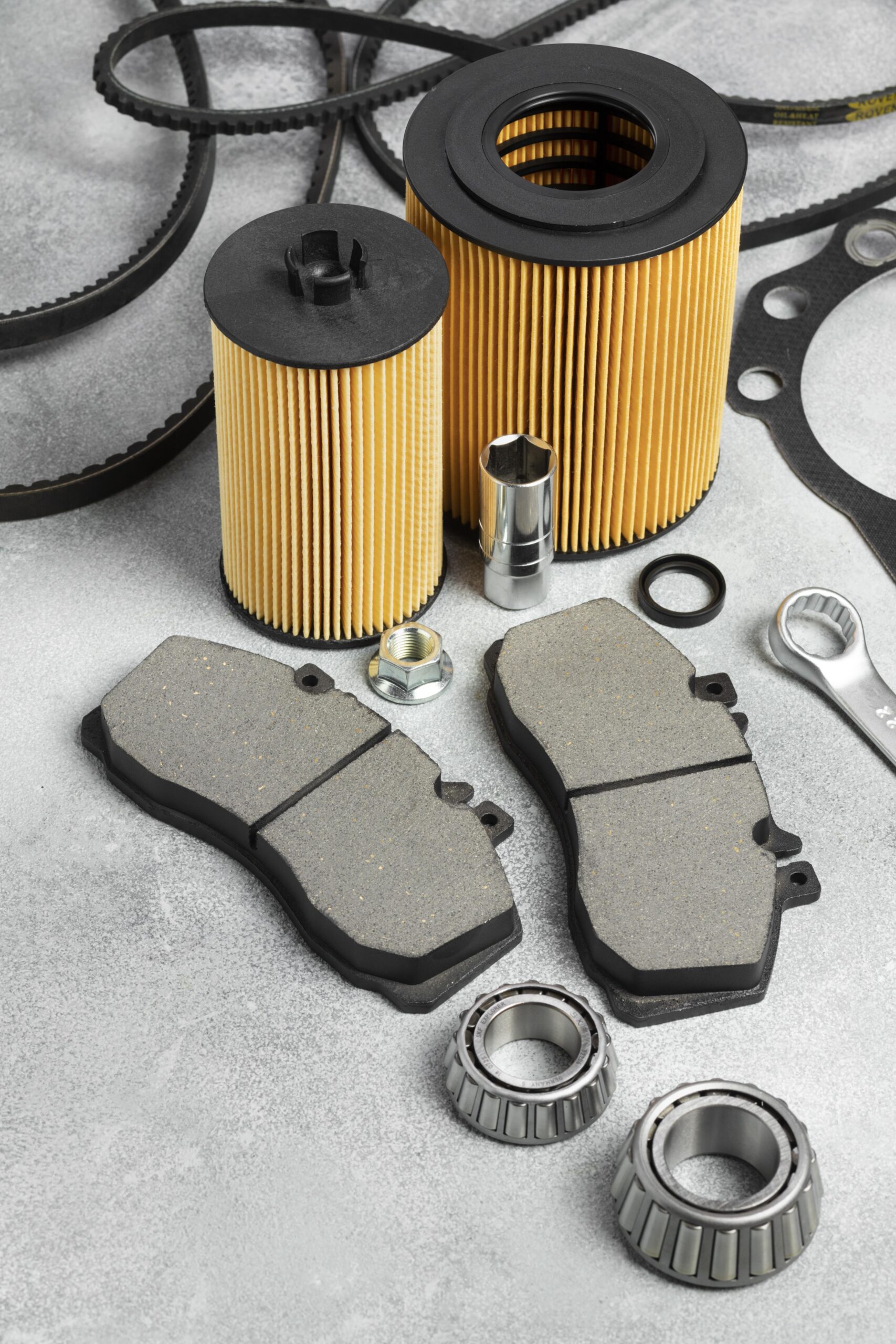Car brake pads are an essential component of every vehicle’s braking system, and they play an important part in guaranteeing road safety. Understanding the complexities of car brake pads is critical for every automobile enthusiast and everyday driver. Here, we’ll explore brake pads, how they work, and the different brake pad types available on the market.
What is a Car Brake Pad?
A brake pad is a friction material component within the braking system that is strategically positioned between the brake caliper and the brake rotor. When the brake pedal is engaged, the brake pads clamp onto the rotating braking rotor, providing the friction required to slow the car.
Functionality:
-
Friction Material:
-
-
- Brake pads are primarily made of friction material, which is designed to tolerate high temperatures while maintaining continuous contact against the braking rotor.
-
-
Heat Dissipation:
-
-
- Brake pads are designed to dissipate heat efficiently. Because the brake rotor and pads generate friction while braking, the heat produced must be regulated to minimize performance loss and assure optimal braking effectiveness.
-
-
Wear Resistance:
-
- The durability of brake pads is crucial, and manufacturers strive to achieve a compromise between effective friction and long-term wear resistance. This guarantees that brake pads continue to perform properly over time.
Types of Brake Pads
-
Non-Metallic Organic Car Brake Pads:

-
-
- This is composed of organic materials like rubber, glass, and Kevlar.
- This is suitable for everyday driving and low-performance applications.
- This tends to be quieter but may wear out faster than other types.
-
-
Semi-Metallic Car Brake Pads:

- A blend of organic materials and metal fibers like steel.
-
- This offers improved heat dissipation and durability.
- This is slightly noisier than organic pads but provides better performance, especially under high-stress conditions.
-
-
Low-Metallic NAO Car Brake Pads:
-
- This contains a higher percentage of metal content, enhancing heat dissipation.
- This provides better braking performance than non-metallic organic pads.
- This can be noisier and may produce more dust.
-
-
Ceramic Car Brake Pads:

- Composed of ceramic fibers, bonding agents, and non-ferrous filler materials.
- Known for superior heat dissipation, low noise, and low dust creation.
- Ideal for high-performance and luxury vehicles.
Understanding the significance of car brake pads and the variety of options available in the market allows car owners to make informed decisions regarding their vehicle’s braking system. Whether you like the quiet comfort of ceramic brake pads or the powerful performance of semi-metallic pads, selecting the proper brake type provides a safe and efficient driving experience. Whichever brake pad you decide to buy, you can purchase all of them here. Regular examination, brake maintenance, and early brake pad replacement as needed are critical to maintaining the efficiency of brake pads and, as a result, the general safety of your vehicle.
Image Credit: Images From Google and FreePik.



